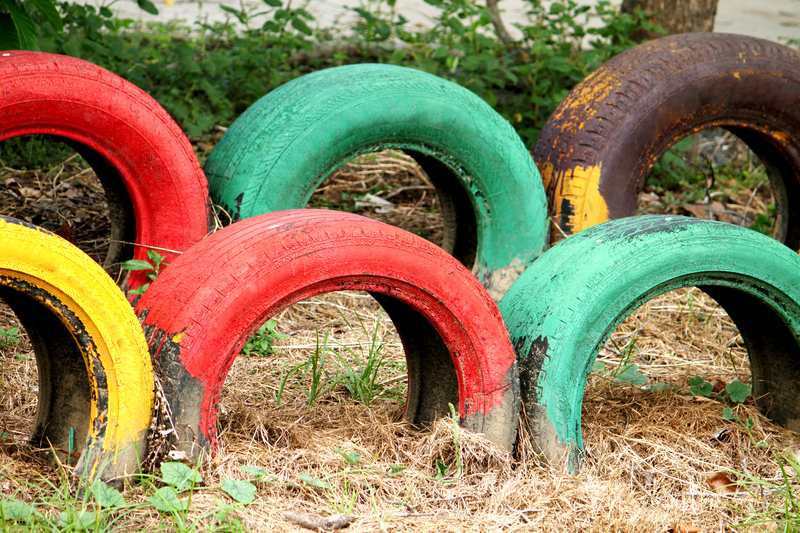Introduction to Innovative Approaches to Eradicating Office Waste
Office waste is a persistent challenge for businesses worldwide, impacting not only the environment but also operating expenses and a company's public image. In today's climate-conscious world, adopting innovative methods for eliminating office waste is essential for businesses seeking sustainable growth and a positive impact. This comprehensive article explores powerful strategies and emerging technologies that help minimize, manage, and even eradicate waste within office environments. Discover sustainable waste management, zero-waste initiatives, digital transformation techniques, and practical steps that can significantly reduce your office's waste footprint.

Understanding the Scope of Office Waste
Before implementing solutions, it's vital to understand the diverse sources of office waste. Office waste encompasses a broad range of materials and resources, including:
- Papers and documents: Outdated files, excess printing, junk mail, and packaging materials.
- Plastic waste: Water bottles, food packaging, disposable cutlery, and packaging from office supplies.
- Electronic waste (e-waste): Obsolete computers, printers, batteries, and other tech gear.
- General refuse: Food scraps, coffee pods, and other non-recyclable materials.
- Furniture and equipment: Broken chairs, tables, and outdated office fixtures.
Reducing office waste requires more than traditional recycling bins. Today's most effective strategies combine technology, culture shifts, and innovative practices that collectively advance a zero waste philosophy.
Digital Transformation: Paving the Way for Paperless Offices
Embracing the Paperless Revolution
One of the most impactful ways to eradicate waste in the office is to transition towards a paperless or severely paper-reduced workplace. Innovative digital solutions not only streamline workflow but dramatically cut down the production and disposal of paper products.
- Cloud Storage and Document Management: Leveraging services like Google Drive, Dropbox, or Microsoft OneDrive for file organization and sharing eliminates the need for physical copies and printing.
- Electronic Signatures: Tools such as DocuSign, Adobe Sign, and HelloSign enable legally binding agreements without a single sheet of paper.
- Digital Notetaking: Switching to apps like Evernote, Notion, or Microsoft OneNote reduces the use--and disposal--of notebooks and sticky notes.
Automation and Workflow Optimization
Automating repetitive tasks and minimizing manual paperwork can lead to significant waste reduction.
- Robotic Process Automation (RPA) in HR, finance, and administrative departments helps cut unnecessary printing and paper trails.
- Digital invoicing and billing cut out paper receipts and traditional mailing systems, greatly reducing waste in accounts departments.
Smart Waste Management Technologies
The Rise of IoT in Office Waste Reduction
Internet of Things (IoT) devices are revolutionizing how offices monitor, sort, and manage waste. These smart solutions not only save resources but also empower data-driven decisions to further eradicate office waste.
- Smart Waste Bins: Connected bins can alert cleaning teams when they are full, monitor what kind of waste is disposed, and even sort recyclables automatically.
- Sensors for Energy and Resource Management: IoT sensors track energy, water, and supply usage to identify wasteful practices and uncover new savings opportunities.
- Real-time Feedback Apps: These provide immediate data to employees about their waste generation habits, creating awareness and prompting positive behavior changes.
AI-Driven Waste Sorting and Analytics
Artificial Intelligence (AI) is increasingly used in smart offices to identify, sort, and process waste cleanly and efficiently. Advanced solutions can visually scan waste streams to sort recyclables from trash, ensuring high recycling rates and minimizing landfill contributions. Having comprehensive waste analytics enables office managers to pinpoint problem areas and target waste at its source.
Zero-Waste and Circular Economy Initiatives for Offices
Zero Waste Office Culture
Building a zero-waste office requires more than policy--it demands an integrated shift in mindset and actions at every organizational layer. Encourage teams to embrace a waste-conscious culture through regular training, goal-setting, and reward schemes for sustainable practices.
- Employee Engagement Programs: Conduct zero-waste workshops, "waste audits," and sustainability competitions to foster accountability and enthusiasm.
- Green Procurement Policies: Choose vendors whose supply chains are environmentally responsible, emphasizing reusable, recyclable, or compostable products.
- Waste-Free Events: Replace single-use cups, plates, and cutlery with reusable alternatives and digital programs.
- Visible Signage and Communication: Informative signage near recycling, compost, and landfill stations clarifies what can be disposed where, reducing contamination and increasing recycling rates.
Circular Economy Solutions in Office Environments
Offices play a vital role in the circular economy--an innovative approach where resources are reused, repaired, and recycled rather than discarded. Examples include:
- Furniture Leasing and Refurbishment: Instead of purchasing new office furniture, use leasing models or work with companies offering refurbished and upcycled furniture.
- Device Takeback Programs: Partner with manufacturers and e-waste recyclers to ensure scanners, computers, and phones are responsibly refurbished, resold, or recycled.
- Closed Loop Paper Use: Use recycled paper exclusively and participate in collection programs that ensure all shredded or discarded paper is repurposed.
Reimagining Office Supplies and Consumables
Green Office Supplies
Transitioning to eco-friendly office suppliers is an immediate step toward eliminating waste in offices. Choose items that are either made from recycled materials or are entirely recyclable or compostable at end-of-life.
- Refillable Pens and Markers replace disposables and significantly reduce plastic waste.
- Biodegradable Cleaning Products ensure that cleaning does not contribute microplastics or toxins to the environment.
- Sustainable Stationery like recycled notebooks, bamboo staplers, and paperless note tablets.
Implementing Centralized Purchasing
Centralizing procurement helps control over-supply and waste--both financial and material. Track inventory digitally and encourage staff to use up supplies before ordering more.
- Bulk purchasing reduces packaging waste and minimizes per-unit costs.
- Implementing approval systems for supply orders curbs over-ordering.
- Donating surplus items or reassigning unused resources between departments cuts unnecessary waste.
Food Waste Solutions for Office Spaces
Sustainable Pantry Programs
Office kitchens and pantries are significant contributors to workplace waste. Innovative offices now adopt eco-conscious food programs, such as:
- Composting Stations: Collect coffee grounds, fruit peels, and other organics for composting, then donate to community gardens or local farms.
- Healthy Snack Initiatives: Source snacks from local vendors in reusable containers, discouraging individually wrapped products.
- Filtered Water Stations: Replace bottled water with filtration systems and encourage reusable bottles and mugs.
- Leftover Sharing Fridges: Reduce food waste by providing shared fridges for employees to deposit and claim excess catered food or allowances.
Innovative Office Waste Policies and Leadership
Rethinking Waste Policies
Eradicating office waste begins with leadership and robust policies. The most innovative companies integrate sustainability targets, transparent reporting, and accountability into their operations.
- Setting Measurable Goals: Examples include "Zero Landfill by 2025" or "Reduce Printing by 80% in Two Years."
- Tracking and Reporting Progress: Publish annual sustainability reports and regularly update staff and stakeholders on waste reduction impacts.
- Responsibility Frameworks: Designate "Green Champions" on each team or floor to lead and advocate for waste eradication.
Case Studies: Offices Leading the Way in Waste Elimination
Pioneering Examples of Innovative Office Waste Reduction
Global corporations and nimble startups alike are achieving remarkable success through creative approaches to office waste management. Here are a few inspiring stories:
- Google: Their "zero waste to landfill" commitment involves composting, reusing old electronics in data centers, centralizing waste stations, and removing personal bins to increase sorting accuracy.
- Unilever: Launched an internal campaign to cut printing, swap single-use plastics for reusables in all offices, and source only eco-certified products.
- Greenpace Office Hubs: Created entirely from upcycled materials, these spaces use IoT sensors to track real-time waste, rapid composters in kitchens, and even furniture made from plastic waste intercepted from oceans.
- Local Startups: Many have championed flexible work policies, cloud-only operations, bike-to-work schemes, and device swaps to minimize both commute and technology waste.

Step-By-Step Guide to Launching Waste-Free Office Initiatives
Practical Tips for Launching an Office Waste Eradication Program
- Conduct a Waste Audit: Track types, quantities, and sources of current waste as a baseline.
- Set Ambitious, Measurable Goals: Define specific targets for waste reduction across categories.
- Form a Green Team: Appoint motivated staff to drive initiatives, track progress, and engage others.
- Invest in Technology: Evaluate which smart bins, cloud systems, or procurement platforms will best serve your objectives.
- Educate and Incentivize: Provide training on waste sorting, digital tools, and incentivize positive behavior (e.g., rewards for the least printouts per month).
- Partner with Local Recycling and Composting Networks: Enhance your capabilities by collaborating with community organizations or green-certified vendors.
- Monitor, Report, and Refine: Use data analytics to improve strategies, share wins, and continuously optimize processes.
Conclusion: The Future of Office Waste Is Zero
Innovative approaches to eradicating office waste are rapidly transforming how businesses operate, benefit their bottom lines, and contribute to a healthier planet. From digital transformation and smart waste management to cultivating a zero-waste culture and joining the circular economy, there are endless opportunities for companies of all sizes to lead the way. As the future of office waste shifts toward zero, embracing these advanced yet practical steps is a proven path to sustainability, efficiency, and positive brand reputation.
If you're ready to make a difference, there has never been a better time to launch or accelerate your office waste elimination goals. Redefine what's possible!